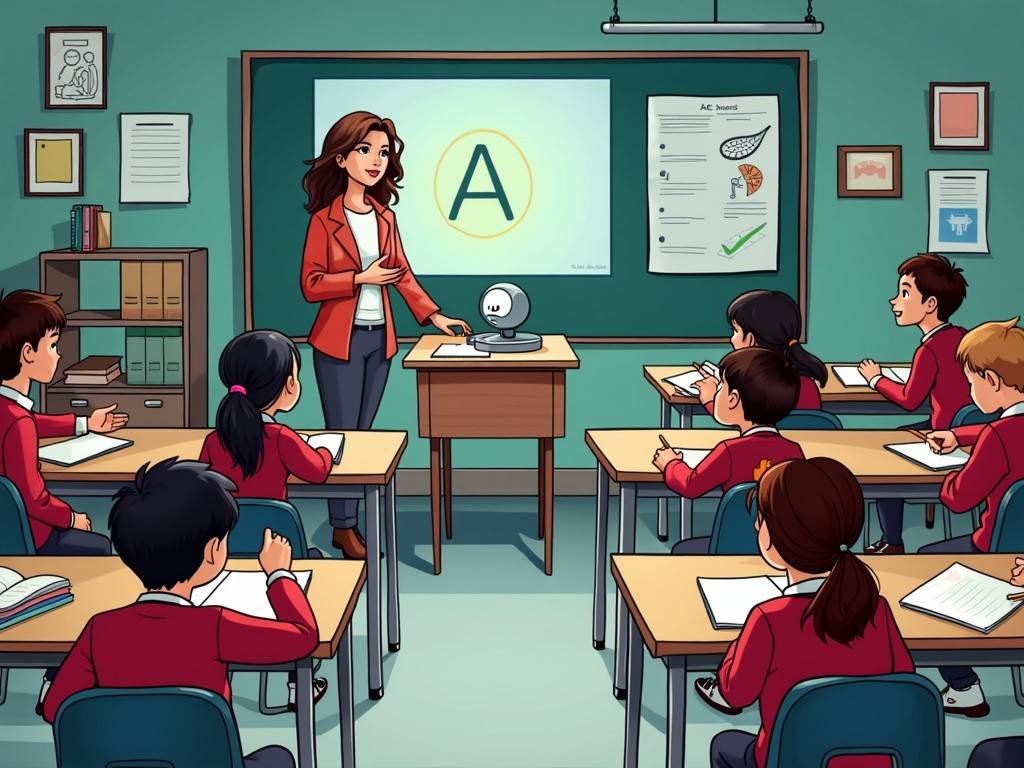Ottawa schools use AI to boost learning and literacy.
Artificial Intelligence (AI) is no longer just a futuristic idea—it’s a tool being used in classrooms today. In Ottawa, one school board is leading the way, using AI to help students learn better and teachers teach more effectively. Let’s dive into how the Ottawa Catholic School Board (OCSB) is turning AI into a learning powerhouse.
Introduction: The Future Is Now
Picture this: students solving math problems or outlining essays with the help of AI. It’s not something from a sci-fi movie. It’s happening right now in Ottawa’s Catholic schools! The Ottawa Catholic School Board (OCSB) is pioneering the use of AI to assist both students and teachers. AI helps students solve complex problems, while teachers use it to streamline lesson planning and provide personalized feedback.
But let’s be clear—teachers aren’t getting replaced by robots! Instead, AI helps with the heavy lifting so educators can focus more on students’ unique needs. There’s also a strong emphasis on ethical AI use and data privacy, ensuring students’ information is secure.

How AI is Changing the Classroom
In Ottawa’s Catholic schools, AI is being used as a tool to enhance learning. Students can use AI-powered apps to brainstorm ideas, summarize articles, and even create visual aids for presentations. It’s like having a digital assistant that helps them understand concepts faster and more effectively. Meanwhile, teachers use AI tools like Brisk Teaching and SchoolAI to make lessons more engaging and accessible for all students, including those with special needs or learning difficulties.
With AI, the traditional classroom is evolving into a more dynamic, student-centered environment. Instead of focusing solely on lectures, teachers can personalize lessons based on students’ progress, using AI to track where extra help is needed.

Ethical AI Use: Teaching Responsibility in the Digital Age
While AI offers incredible benefits, the OCSB is careful about teaching students how to use it responsibly. Students are being educated on digital literacy—learning to question AI outputs, identify potential biases, and understand the importance of privacy. Teaching students how to use AI properly is just as crucial as teaching them math or science.
For younger students (kindergarten through Grade 6), teachers lead the way in using AI. Older students are allowed to explore tools like ChatGPT and Google Gemini, but they’re taught how to use these technologies responsibly, not as shortcuts for assignments. This approach ensures that students are gaining not only technical skills but also the critical thinking needed to navigate the digital world.
Digital Literacy: Preparing for an AI-Driven Future
Ottawa’s schools are doing more than just giving students AI tools—they’re helping them understand how to use them wisely. With AI becoming part of our daily lives, digital literacy is no longer optional. In Ottawa, students learn how to spot misinformation, detect biases in AI-generated content, and avoid falling for digital traps like deep fakes.
By equipping students with these skills, the OCSB is preparing them for a future where AI will play a significant role in many industries. Whether they become engineers, artists, or entrepreneurs, knowing how to work with AI will give them a competitive edge.
AI for Younger Students: Learning with a Teacher’s Guidance
Wondering if kindergarteners are using AI? The answer is yes—but in a way that’s appropriate for their age. AI tools like ChatGPT and Google Gemini are restricted to students aged 13 and older, so younger students experience AI through teacher-led activities. For example, teachers might use AI to make lessons more interactive or tailor exercises to individual students’ needs.
This gradual introduction ensures that younger students are getting comfortable with AI while still relying heavily on human guidance. By the time they’re ready to use more advanced AI tools, they’ll have a solid foundation in how to use them responsibly.

Data Privacy: Keeping Student Information Safe
One of the biggest concerns with AI in schools is data privacy, and the OCSB has made it a top priority. They’ve put a privacy framework in place to protect student information and ensure AI tools are safe to use. Teachers are required to review any AI tool before using it with students to ensure it meets strict privacy guidelines.
AI also doesn’t do all the work. While it can handle up to 80% of lesson planning, the remaining 20% is personalized by teachers. This balance ensures that students are still getting tailored, thoughtful lessons while benefiting from the efficiency of AI.

Conclusion: A Balanced Approach to AI in Education
The Ottawa Catholic School Board is showing that AI can be a valuable tool in education, but only when used responsibly. By teaching students not just how to use AI but how to question and understand it, Ottawa’s schools are preparing them for a future where AI is everywhere.
Through ethical guidelines, digital literacy, and a focus on privacy, the OCSB is ensuring that AI enhances learning without compromising on quality. Whether it’s helping teachers save time or guiding students through complex subjects, AI is shaping the classrooms of tomorrow.
FAQs:
-
- What are the main benefits of AI in Ottawa’s Catholic schools?
AI helps students with tasks like brainstorming ideas, solving math problems, and creating essays. It also assists teachers in lesson planning, providing more personalized feedback.
- What are the main benefits of AI in Ottawa’s Catholic schools?
-
- How is student data protected when using AI tools?
The Ottawa Catholic School Board has a privacy framework to protect student data. Teachers review all AI tools before using them in the classroom.
- How is student data protected when using AI tools?
-
- Is AI replacing teachers?
No! AI is a supportive tool that allows teachers to focus more on individual student needs while handling administrative tasks.
- Is AI replacing teachers?
-
- How are younger students introduced to AI?
Younger students use AI under the guidance of teachers. Advanced tools like ChatGPT are restricted to students 13 and older, ensuring age-appropriate AI use.
- How are younger students introduced to AI?
-
- What skills are students learning through AI?
Besides technical skills, students are learning critical thinking, digital literacy, and how to evaluate AI outputs for bias and accuracy.
- What skills are students learning through AI?
